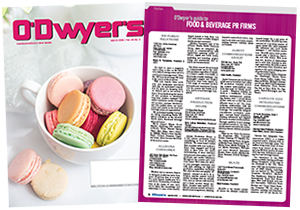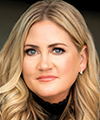|
|
With the new Dietary Guidelines for Americans making recommendations reminiscent of years past — including reducing saturated fat and sugar, balancing calorie intake and choosing a variety of nutrient dense foods — consumers remain drawn to more specific diet and nutrition plans such as Paleo or gluten-free. These trending diets are likely to have a greater impact on brands.
For the fourth year, the annual “What’s Trending in Nutrition” survey from Pollock Communications and Today’s Dietitian gives marketers and manufacturers an update on what consumers will be putting in their shopping carts and on their plates this upcoming year.
|
|
Who knows what’s trending in nutrition? With their ears to the ground, the gatekeepers for all things food and nutrition — registered dietitian nutritionists — are pros at forecasting nutrition trends. “Registered dietitian nutritionists are the top food and nutrition experts for consumers, brands and the media,” said Louise Pollock, Founder and President of Pollock Communications. “Any health and wellness marketing team would benefit from their insights on consumer behavior and habits.”
The 2016 survey, conducted by the nutrition trade magazine Today’s Dietitian and Pollock Communications, shows some trends that are guiding consumers from the store to the plate — with seeds as a leading superfood, ancient grains staying strong and kale faltering in its MVP status, while certain product claims and a new position on fat emerge.
Whether they’re in, out, or staying the course, here’s what you should know in 2016:
Clean eating is where it’s at
According to the survey, RDNs agree that more consumers will base their purchasing decisions on “clean eating.” Gluten-free and Paleo diets will still be popular, but the nutrition pros tell us that consumers will move towards “clean” versus caveman.
The influencer award goes to …
The stars! Most RDs said they believe that nutrition trends start with celebrities, with 33 percent citing them as the initiator of food and eating fads.
Shopping for free
When it comes to the messages and claims that impact shopping decisions, consumers in 2016 will look for “free.” Claims like “GMO-free” and “antibiotic-free” will prompt purchases, as will “additive-free” and “locally sourced.” The question is whether these characteristics actually drive healthier purchases. While consumers may look for GMO-free or other “free-from” claims on the label, it doesn’t mean it always leads to healthier, more nutritious options.
Healthy eating in the digital age
When it comes to getting nutrition information, the RDNs cited blogs, social media and TV, in that order. What’s more, 71 percent believe more consumers will use technology to help improve their diet in 2016, likely tracking their food intake or activity with smartphone apps or wearables like MyFitnessPal, LoseIt and Fitbit, among others. While the Internet and new technology can provide a wealth of nutrition information, nearly two-thirds of RDNs are concerned that consumers are also getting wrong and potentially harmful nutrition information from blogs and social media. When sharing nutrition facts and news, look to the experts for a credibility factor.
Taste still a leading factor
With diet trends constantly shifting, when it comes to deciding what to eat, RDNs say that taste and convenience are consumers’ most important considerations. Nearly all responded that convenience and taste are important or very important when it comes to deciding what to eat — while healthfulness is not the deciding factor according to half of the respondents. Even when making healthy choices, RDNs know that taste and convenience can be deal breakers.
The 2015-2020 DGAs can guide brands looking to fit a healthy profile — but gone are the simple recommendations of a standard “three square meals a day.” With nutrition information and new diet trends spreading as fast as a YouTube video about babies, brands need to be equally aware of the latest must-have foods and consumer preferences. Food trends, as predicted by the food experts themselves, registered dietitian nutritionists, direct brands to what consumers are looking for as they scan store shelves.
* * *
Jenna A. Bell, PhD, RD, is Senior VP and Director of Food & Wellness at Pollock Communications.




 What the biggest meal of the day can teach us about serving up effective nutrition communications campaigns.
What the biggest meal of the day can teach us about serving up effective nutrition communications campaigns. Tips to refine and amplify your CPG brand strategy to win in 2024 and beyond.
Tips to refine and amplify your CPG brand strategy to win in 2024 and beyond. Strategic communications strategies for success in the growing “food is medicine” movement.
Strategic communications strategies for success in the growing “food is medicine” movement. How brands can authentically communicate sustainability issues and create a brand experience that’s compatible with consumers’ values.
How brands can authentically communicate sustainability issues and create a brand experience that’s compatible with consumers’ values. Communicating the effects that climate change and a growing world population have on our food system—and why change is needed.
Communicating the effects that climate change and a growing world population have on our food system—and why change is needed.


 Have a comment? Send it to
Have a comment? Send it to 
No comments have been submitted for this story yet.